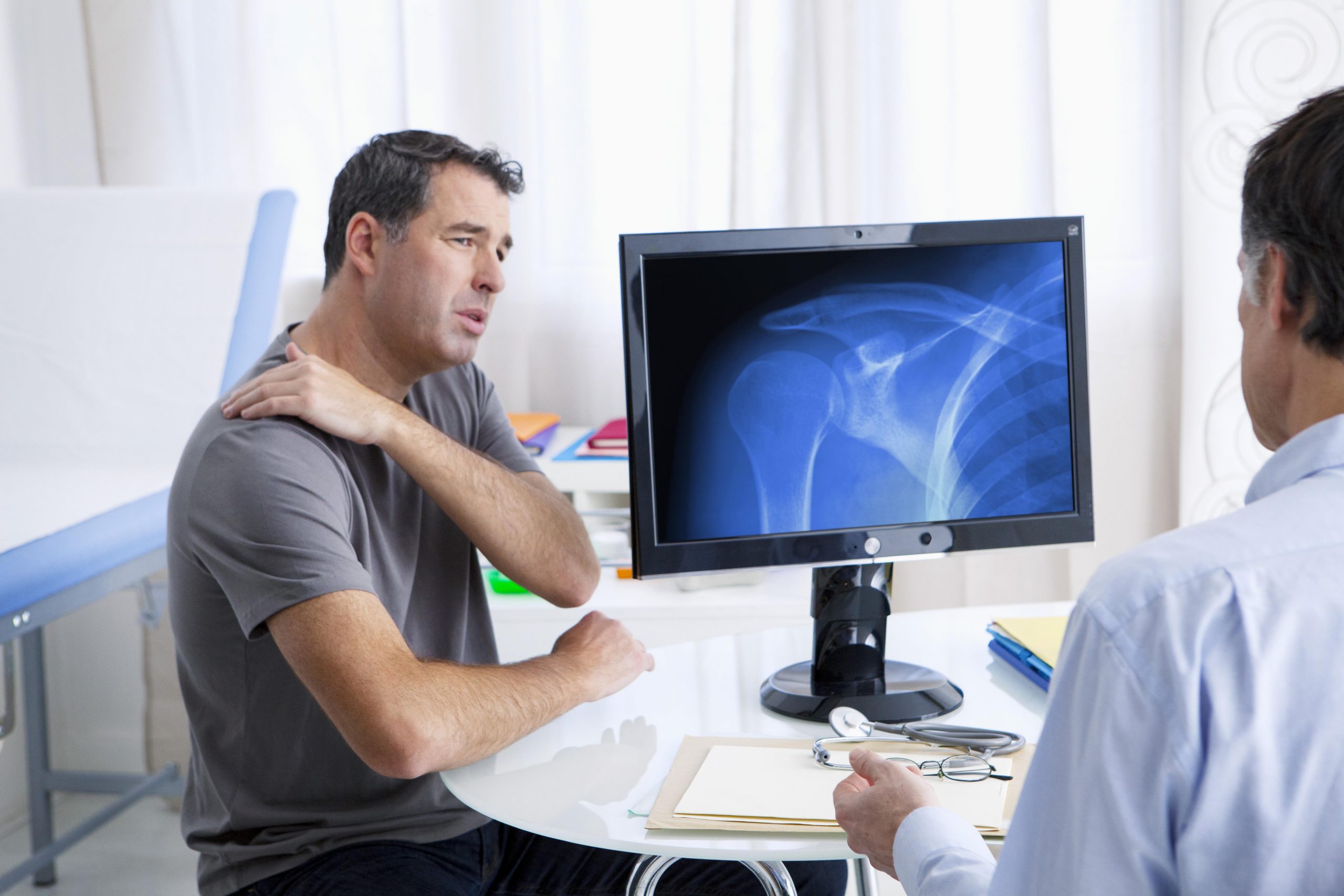
It is not uncommon for athletes participating in sports – particularly those involving repetitive overhead motions of the arm – to experience painful rotator cuff tears. In older patients, sudden trauma and the natural aging process can also result in shoulder pain caused by rotator cuff tears.
How Rotator Cuff Tears Happen
The rotator cuff is made up of a set of tendons connecting the main muscles of the shoulder to the upper arm. These tendons and muscles work together to stabilize the shoulder joint and make it possible for the arm to be raised and rotated. Over time and with overuse, the tendon’s constant motion can result in tiny tears and bleeding, leading to weakness in the rotator cuff.
Severe tears can happen suddenly from a fall and usually cause intense pain and are often accompanied by a snapping sensation and immediate sense of weakness in the upper arm – these types of injuries are best seen by a physician without delay.
Tears that develop slowly from aging or overuse can also cause pain and arm weakness, but the symptoms may be milder and only present when lifting or extending the arm. The risk of developing a partial or complete tear also increases for injuries that linger undiagnosed. In fact, complete tears are seen in as much as 25 percent of patients over the age of 60.
Who is At Risk for Rotator Cuff Tears
- People whose livelihoods necessitates repetitive lifting or activities that create consistent overhead movement (such as carpenters and painters) are also at risk for rotator cuff tears, especially athletes like tennis players and baseball pitchers.
- Most instances of rotator cuff tears are caused by normal wear and tear that happens slowly over time making people over the age of 40 at greater risk.
- Young adults are most at risk for rotator tears due to traumatic injury such as a fall, although they can also experience overuse tears due to repetitive sports activity or overhead work.
More than just shoulder pain
The most common symptoms of a rotator cuff tear include:
- Shoulder pain while at rest, particularly at night when lying on the affected shoulder
- Sudden or increased pain when lifting and lowering the arm or with specific movements
- A sense of shoulder weakness when lifting or rotating the arm
- A crackling sensation (known as crepitus) when the shoulder is moved in certain positions
Surgical Intervention
When a rotator cuff tear does not respond to non-surgical efforts and when quality of life becomes an issue, surgical intervention may be your best option. One method considered to be the standard of care is called arthroscopic reconstructive surgery where small incisions and a tiny camera are used to facilitate repair. Recent advances in this technique make it possible for surgeons to treat larger tears while decreasing the instances of post-operative pain and stiffness. About 80-90 percent of patients find relief of chronic pain and a restoration to more normal function and motion of the arm and shoulder.
Following surgery, on-going physical therapy following rotator cuff surgery can last up to 12 weeks and is aimed at helping patients regain full strength and function with very positive results.
SRO Shoulder and Elbow Care Center
As one of the top programs in the North Bay for shoulder care Santa Rosa Orthopaedic’s Shoulder and Elbow programs provides highly specialized care to those experiencing arm pain. Our patients benefit from the expertise and skill of specialists who perform countless procedures each year while continually pioneering advances in repair and replacement. Learn more …

